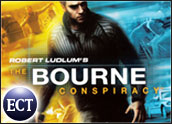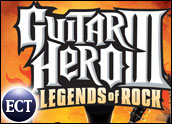
Since the dawn of video games, drug use has had its place. Recently, however, more games are including drug paraphernalia and references. “Elder Scrolls: Oblivion” has its stuttering, jittery skooma addicts. “Haze” has its soldiers pumped up with nectar to enhance their combat abilities.
“Grand Theft Auto 4” has Jacob, a Rastafarian who is constantly smoking weed. Even Mario had a taste for mushrooms that made him grow and flowers that let him throw fireballs! The hue and cry to eliminate the influence of drugs from video games has gotten louder, and the specter of censorship looms over the industry.
Banned Down Under
The latest dispute over drug content centers on“Fallout 3.” This game, set to release in early August, is the most recent addition to RPG’s post-apocalyptic Fallout series. Characters are able to take chems that can have a variety of effects — both positive and negative — on their physical and mental state. A character can become stronger or faster, but can also become less and less intelligent with prolonged chem use. Decreased intelligence seriously affects dialog and available conversation options. Despite consequences built into “Fallout 3,” Australia has already banned its release.
The country’s OFLC (Office of Film and Literature Classification) is the Australian equivalent of the U.S.’s ESRB (Entertainment Software Rating Board) and the MPAA (Motion Picture Association of America) rolled into one. One major difference between the Australian and U.S. systems that is causing Australian gamers profound frustration is the lack of a rating beyond MA (Mature Adult), which is suitable for gamers 15 years old. That means any game the OFLC deems unsuitable for a 15 year old will not be sold anywhere in Australia.
The OFLC also rates films and books — yet in each of those cases, there is an R (18 years and older) rating. There is an X rating (18 years and older) for films that contain only sexually explicit content. The harsh restrictions on video game content seem out of whack, and very few people find themselves on the OFLC’s side.
This banning of so-called inappropriate video games is nothing new to Australia. “Manhunt” and “Dark Sector” both were originally banned by the OFLC. After the objectionable material was excised, “Dark Sector” was released in its edited form. “Manhunt” was also banned in Britain, but that ban has been lifted.
OFLC offered the following rationale for banning “Fallout 3” from Australian store shelves:
“The game contains the option to take a variety of ‘chems’ using a device which is connected to the character’s arm. … The positive effects include increase in strength, stamina, resistance to damage, agility and hit points. Corresponding with the list of various ‘chems’ are small visual representations of the drugs: These include syringes, tablets, pill bottles, a crack-type pipe and blister packs. In the Board’s view these realistic visual representations of drugs and their delivery method bring the ‘science-fiction’ drugs in line with ‘real-world’ drugs.”
My Game, My Choice
In order to satisfy the OFLC, the game’s creator could edit out the drug content. It’s not clear how vital the use of drugs is to “Fallout 3” game play, but censoring original content to satisfy the ratings board would be a disservice to the developer. There’s plenty of violence in the game, but the OFLC is banning it strictly because of the drug content. Apparently, blowing someone’s head off is much more appropriate than injecting oneself with morphine to help numb the pain of a bullet wound.
In the U.S., the average gamer is 35 years old. The average age of Australian gamers is 28. Yet all Australian gamers are expected to confine their play to games suitable for kids who are 15 — or even younger. Whether in Australia or anywhere else, a rating system that applies different criteria to video game content than to that of other media of expression like film and literature is infuriating.
If it makes sense to ban “Fallout 3,” then it follows that “House” should not air since it features a doctor addicted to pain medication, and “ER” should be banned for its excessive depictions of syringes. Following this logic, “A Clockwork Orange” could no longer be distributed, and “Pulp Fiction” would never have been seen in theaters or sold on DVD. Any artistic expression involving drug use or drug paraphernalia would be taboo. Did someone determine that depicting drugs and violence in a video game was more harmful than showing it in any other form? I guess I didn’t get the memo.
Creative expression should not be censored. The target audience for each video game should be taken into consideration, as well as the average age of gamers in a particular region area. However there is no sensible reason for applying different rating standards for video games than for movies, television or literature. Advocates banning violence and drugs in video games consistently argue that they have a direct effect on the likelihood of a player engaging in violence or drug use. That notion is outdated and illogical — not to mention an insult to the intelligence level of gamers. Watching the news should then be banned for exposing all viewers to accounts of murder and drug use.
Is it likely that one day I will go on a duck shooting spree with my nonexistent shotgun simply because I loved Duck Hunt? I think not. Of course, people live vicariously through their video games! However, that doesn’t mean that those same people confuse game play with reality and abandon their personal moral standards. Video games allow people to do things that are socially unacceptable without fear of real-life consequences. They’re exactly what they profess to be: games. Adult fans should be allowed the freedom to choose their own vices on the video screen and be trusted to leave them there.
















































